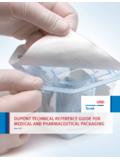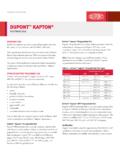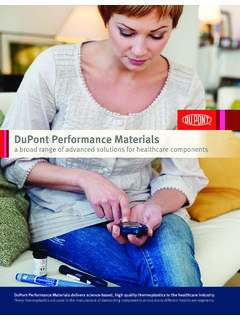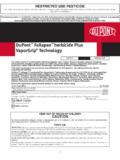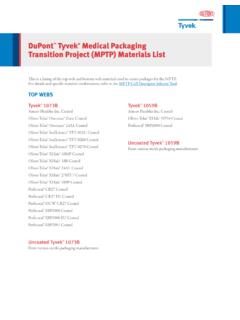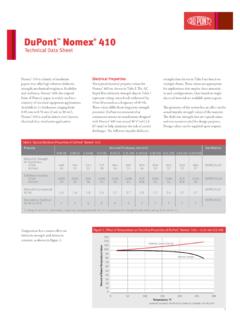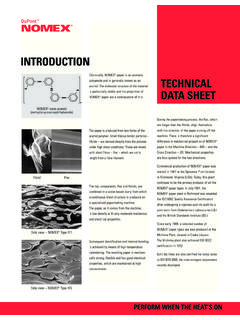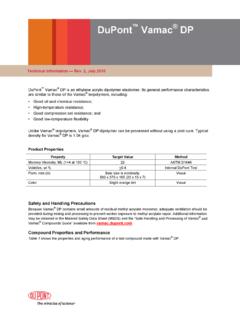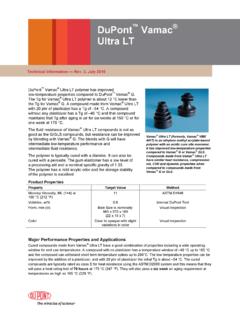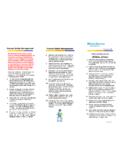Transcription of Process Safety Management What Is the Right Audit …
1 Process Safety Management what Is the Right Audit Approach for You?In the implementation of Process Safety Management (PSM) to a highly hazard-ous Process , those who implement or lead this effort need good feedback to ensure that development and continuous improvement of the managing systems do occur and that the desired results are achieved. This feedback can come in more than one form. One important feedback method is the use of metrics. A second valuable and often more detailed feedback system is the periodic and robust Process of auditing. As such, I am going to discuss Process Safety Man-agement, what Is the Right Audit Approach for You? I will share my perspectives as one who has been involved in thousands of audits. I have worked primarily in operations Management at eight differ-ent plant locations, on three continents, and with two different companies. In addition, I have held various regional and global positions which required travel to many other sites.
2 Most of my experience has been in conducting First Party Audits and I have also been audited by both Second and Third Party Audit teams. And now, as the Global Process Safety Management Leader for DuPont Safety Resources, I conduct what amounts to third party assessments (or audits) for current and potential clients around the world. Universally, I have found auditing to be critical to the successful imple-mentation of Process Safety Management . The same could also be said of just about any managing Process that is being implemented - Six Sigma, Lean Manu-facturing, Environmental Planning and Product Stewardship. So what is the Right Audit approach for you? I will organize the balance of my presentation around the simple concept of First Party, Second Party and Third Party Auditing, describing from my experience the pros and cons of each and why each type should be included in your own Audit approach.
3 And as I refer-enced earlier, I also believe strongly that the learnings I will share with respect to PSM auditing have strong relevance to all forms of EHS D. RainsGlobal Process Safety Management LeaderDuPont Safety ResourcesWilmington, DelawareFirst Party AuditingFirst Party Auditing is a term with various definitions. DuPont s First Party Audit Standard defines five different types: Behavior Based Audits where an employee or employees observe other employees performing work and then provide feedback Layered or Tiered Audits where a manager leads an Audit team of individuals from his/her organization. This allows the manager to demonstrate his/her value for Safety and establish high standards of compliance and performance Area Audits where the focus is a geographic area of the site Cross Area Audits where an area Audit is performed by auditors drawn from other areas within the site Focused Audits where the Audit concentrates on a single aspect of the EHS or PSM Management systemI am a bit of a traditionalist; therefore, for me, a First Party Audit is analogous to writing in the first person when the pronouns I (singular) and we (plural) are used.
4 Auditing in first person is the spirit behind First Party Auditing where managers and workers Audit themselves, observing current conditions, evaluating performance against standards, and deciding what is acceptable and where corrective actions are needed. An Audit without participants from the Audit area is a different breed of First Party Audit . One tool that I have found to be very effective for conducting First Party Audits is a digital camera, taken along, of course, with the appropriate work permits in hand. Pictures can be worth a thousand words or more. When shared in a leadership team meeting, in a one-on-one counseling session or in an organization-wide Safety meeting, really good pictures do not need further explanation. In the following examples, there was no disputing the unacceptability of the observed conditions. It was also crystal clear to everyone how I felt about what was observed and what I believed needed to be done to correct the situation.
5 Here are a few of my favorites:PR oceSS Safety Management what IS the Right Audit APPRoAch FoR You?Exhibit 1 Exhibit 2 Exhibit 3 Exhibit 42 Copyright 2009 DuPont. All rights reserved. The DuPont Oval Logo, DuPont and The miracles of science are registered trademarks or trademarks of E. I. du Pont de Nemours and Company or its affiliates.(6-09)In these instances, as an additional training exercise, we spent time in a group setting attempting to identify as many corrective actions as possible from what was visible in the pictures. Another technique I have found helpful is to teach the organization in a Safety meeting the lessons I have learned about auditing. My favorite training slide is below: what are Brian s Audit Best Practices ? Know what you are looking for. Know the standard you are comparing against. Be prepared Get close to the source and make the observation first hand; - Touch the actual permit or procedure- See the field observation with your eye; take a picture- Get physically close to what you are auditing.
6 Get down on your knees. Climb the stairs or the stationary ladder Make a record of your observations, including the location, so that future corrective action is properly directed Look for anything and everything that is not 100% correct. Find an expert and ask questions as to what should be correct. Correct as many of the observations as possible on the spotAn interactive SHE observation Process is an effective First Party Audit approach for creating positive interactions while identifying at-risk behaviors and correcting them. It is intended to deliver direct, positive reinforcement and reinforce acceptable standards. The basic approach is Is a Behavior Based Safety Audit ?It IS A 30-minute observation of people working in the site A key indicator of the level of Safety Management in that area An activity that motivates employees and increases Safety awareness A positive experienceIt is NOT A gotcha!
7 (no names) Just a job for the Safety officeWhat type of contact do you believe would be appropriate for these persons?PR oceSS Safety Management what IS the Right Audit APPRoAch FoR You?Exhibit 5 Exhibit 63 Copyright 2009 DuPont. All rights reserved. The DuPont Oval Logo, DuPont and The miracles of science are registered trademarks or trademarks of E. I. du Pont de Nemours and Company or its affiliates.(6-09)All of the principles that apply to Safety First Party Auditing also apply to First Party Auditing of Process Safety Management . At the same time, there are numerous differences. The largest single difference is that unsafe PSM behaviors and conditions are not as readily observed. I have very few pictures of a poor quality PHA, a piece of new equipment that was started up without a Pre-Startup Safety Review or a PSM training course that was not taken per schedule. These might be my two best:We have been collecting a series of questions that leaders can ask during routine, informal First Party Audit interactions with employees with respect to PSM, their knowledge, and their degree of compliance.
8 A few appropriate questions include: Can operators or maintenance technicians show how they access the most up-to-date P&ID s and/or equipment inspection histories? Has the individual participated in any recent PSM activities? An incident investigation? A PSSR? A procedure review? An Audit ? Have there been any recent changes in Standard Operating Conditions, Alarm Set Points or Interlock Set Points? Were they approved and documented? Were the operating personnel trained on the changes? Does a control room technician know the safe operating limits of the plant and the consequences if operated outside those limits? Is the control room technician currently operating the facility with any interlocks by-passed? If so, was the by-pass procedure appropriately followed? Is the control room technician aware of any work going on in the plant so that he/she can alert people to any Process emergency?
9 Any hot work in progress?On larger sites, it is often more meaningful to conduct PSM audits across areas or units. In these situations, members of Management or other knowledgeable subject matter experts perform audits in units outside their own area of responsibility. The strength of the cross-area Audit is that auditors bring new and different perspectives into the area being audited. In addition, they might also be site level resources with advanced knowledge and training. An added plus is that the Audit team members learn how others are addressing the same PSM challenges they likely face in their own units. It is true that one of the weaknesses of First Party Auditing is the potential that a less than rigorous and comprehensive Audit will be performed. This could come from a desire to reduce the resulting work load, to feel better about the progress made to date or to protect the leader or team from scrutiny about their poor performance.
10 Auditors must display strong leadership and commitment in order to conduct meaningful First Party Audits. It has been my observation, however, that the best performers are also the best First Party Auditors, even within their own area of responsibility. The best performers demand brutal honesty, have often studied more PR oceSS Safety Management what IS the Right Audit APPRoAch FoR You?Exhibit 7 Mechanical IntegrityFacility SitingExhibit 84 Copyright 2009 DuPont. All rights reserved. The DuPont Oval Logo, DuPont and The miracles of science are registered trademarks or trademarks of E. I. du Pont de Nemours and Company or its affiliates.(6-09)and have achieved a higher level of subject matter expertise. The best performers place the integrity of the managing system and its efficacy before any individual friendship or ego. Thus, the best performers also perform the best First Party Audits.
